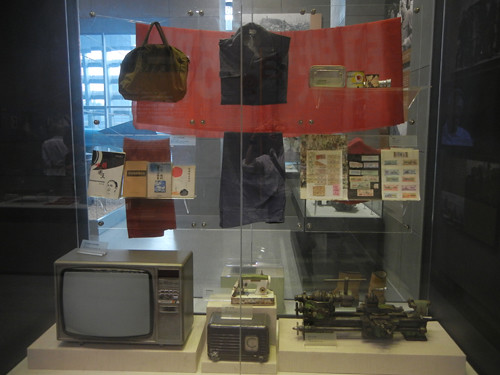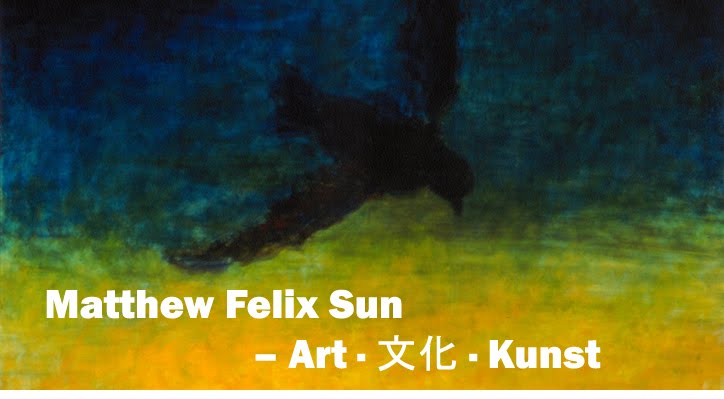
Last September, when I returned to my home city, Manchurian Shenyang, I visited the Industrial Museum of China, located in the Tiexi District, which was the industrial quarter of Shenyang and the heart of the heavy industrial in China since 1910s through 1980s, when the changing demographics and economy model left the district behind, culminating in about 75% unemployment rate in 1990s in that district, whose population's plight was documented by a heart-retching documentary, Tie Xi Qu: West of the Tracks, recording the decline of the district and the consequences on its once proud industrial worker residence. Now, though largely through controversial land deals, the district came out of the deep depression, a visit to the museum still brought mixed feelings to many people in Shenyang - nostalgia, sadness, anger, resignation, and reasonable or unreasonable hope and pride.
The museum was converted from a huge decommissioned factory, with an impressive modernistic façade:





The museum documented briefly the industrialization of China, which generally started fin the Yangtze Delta and later on, Manchuria, administered by warlords and Russian or Japanese conquerors. Below are some machinery from that era:

U.S.HPM Juice Press, 1877


Grand Marshall Zuolin Zhang, a champion of education and industrialization in Manchuria, early 20th century


Railroad Signals, Southern Manchurian Railroad, 1930s

Locomotive, Southern Manchurian Railroad, 1930s
The most interesting item was a table tallying Tiexi workers' strikes and their often victories - improved work conditions and increased wages. The table only cover years from 1919-1944. Apparently, since the Communists took over, no such strikes were allowed to take place:

Workers Strikes and their victories (1919-1944)
The main section of the museum was devoted to the heydays of Tiexi District in 1950s-1970s, when it was the center of the production of the entire nation. There was much chest-thumping heroism, as seen in these relief sculptures below:





Even on the machine tool from that era, there was such writing: Stressing Revolution.

Then we saw the somber side of the museum - the remain of a huge factory and the recreation of manufacturing scenes:



Next, we saw the recreating of workers' canteen - a large dining hall, adorned with banners representing most prominent factories once existed in Tiexi District, Shenyang. The canteen was a functioning restaurant and one could buy food cooked similar to those served in former canteens from various factories, and some fancier stuff:





Workers' canteen and traditional aluminum lunch boxes from those era
From food, we moved on to lodging. In 1950s, several quite beautiful Soviet styled housing were built for workers - and it was quite an award and honor to be able to like there - Workers' Village. Below are picture of the large compound and several recreated units, furbished with genuine items donated from former residents:







Similarly, there were other household items from that era, including a collection of ration coupons for any merchandize one could think of - grain, cloth, wine, cigarette, cooking oil, sugar, etc.:

Household Items from 1950-1980s, including food, cloth ration coupons

Barber Tools, 1970s
There was a trolley bus from now defunct bus line, No. 11 in Shenyang, which used to serve Tiexi District and beyond, into civil servants quarters where I grew up:

Recreated Bus Stop for now defunct No. 11 Trolley Bus in Shenyang, serving Tiexi District and beyond

Recreated No. 11 Trolley Bus in Shenyang, serving Tiexi District and beyond
Since we are touching on transportation, I also include couple pictures of old vehicles and a train locomotive from the Transportation section, but omitted those of various sedans and jeeps as they didn't interest me:



There were tractors and mining tools as well:


And they never forget to include items to demonstrate their military might:

Finally several artwork in different sections of courtyard:


Visiting the museum was time traveling experience and quite poignant one.
Related posts on Art · 文化 · Kunst:
- Ziyan Lavender Manor Garden, Shenyang China
- Art in the Streets of Shenyang, China
- Liaoning (Proving) Museum in Shenyang
- Kitchen, Restaurant and Food Court in Shenyang, China
- Fruit Shop and Market in Shenyang, China
- Stores and Markets in Shenyang, China
- Rooftop Vegetable Garden in Shenyang, China
- New Subway System in Shenyang, China
- Hospitals in Shenyang, China
- Shenyang, China ... continued
Label: Shenyang, Shenyang Trip 2013





No comments:
Post a Comment